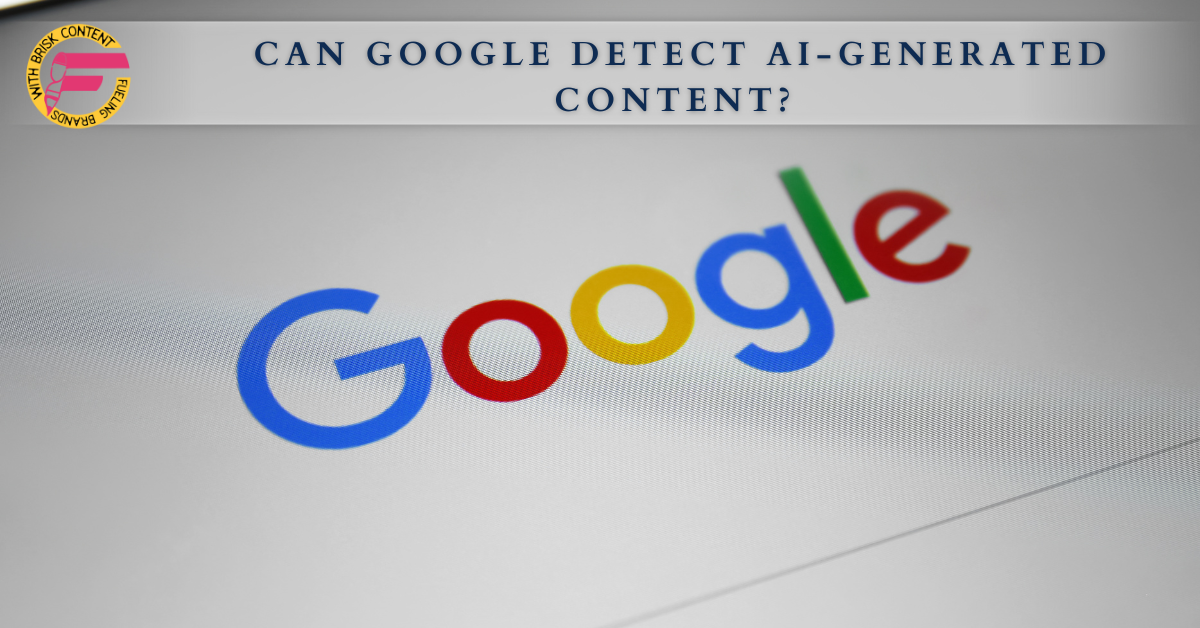Can Google Detect Ai-Generated Content?
Before we jump to the answer let us discuss the terms used for our new readers. And slowly and gradually reach our question Can Google detect AI-generated content?
What is AI-generated content?
The term “AI-generated content” refers to any written, visual, or auditory information produced by artificial intelligence tools like Scikit Learn, TensorFlow, PyTorch, CNTK, Caffe, Apache MXNet, Keras, OpenNN, AutoML, and H2O, etc.
How does an AI tool work?
In the case of text, an AI language model is trained on a sizable dataset of human-written material to learn linguistic patterns and structures. After which it can produce new content that closely resembles the tone and style of the training data.
Remember, Any human with a higher reading level is likely to bounce soon and never return if your blog and website are littered with AI-generated content. Therefore a human touch is always essential.
How and where is AI-generated content used?
Millennials are in a habit of using artificial intelligence in their digital strategy. It is a crucial step in the process of a successful content marketer today. These are used to create news stories, chatbot replies, and even artistic writing.
AI-generated content is diversified and utilized for a range of tasks. It can save publishers and content creators time and money while also enabling them to generate material at a scale that would be challenging or impossible for them to do manually.
For businesses to expand and develop their web presence, AI-generated content must be considered as a real alternative; provided your content is helpful for the audiences and written specifically for them and not for ranking on Google.
Is AI-generated content misused?
This is an era where everything is misused. AI-generated content too has the potential to be used in harmful ways, such as the production of propaganda or fake news.
There are also worries about its authenticity and quality. Because of this, efforts are being made to guarantee that AI-generated content is utilized morally and sensibly through continual study and development.
How does Google detect AI-generated content?
The ability of Google to recognize AI-generated content is improving.
It employs several methods, including natural language processing (NLP) algorithms that scan the text for typical grammar and pattern usage in computer-generated writing, to recognize and flag information created by an AI tool.
Which are the most commonly used AI detection tools?
The most commonly used Free AI Detection Tools are:
- Content at Scale
- Originality.AI
- Hugging Face
- GLTR
- Kazan SEO
- Writer.
- GPTZero
- Corrector App
How do AI Detection tools work?
- The process is simple, select and copy the entire content you have to check.
- Then paste it in the dialogue box available on your preferred detection tool.
- Click to check to analyze option.
- Hence you will get an answer in the form of a percentage as to how much is unique i.e written by you and how much has been written by the AI tool.
- It even highlights the sentences, paragraphs, or anything from the entire content that has been AI-generated.
- You don’t have to dig deeper to investigate it.
Can Google detect AI-generated content?
Google has a set of guidelines that are used to evaluate the quality of content on websites. It is popularly known as E-E-A-T. It stands for Experience, Expertise, Authoritativeness, and Trustworthiness.
Entrepreneurs, founders, company owners, and content marketers who wish to increase the visibility of their websites on Google will find Google’s E-E-A-T rules and AI content production to be quite helpful.
So the question arises amongst you all is, What is the issue with AI-generated content?
The answer is simple and it is that any content that the business or content creator creates to assist readers has the potential to rank. When it is developed and directed with that goal, even Artificial material is acceptable.
But, even if it was authored by people, ANY material created only to improve search rankings is a problem.
The one-line solution is Always to create content to help people, to spread knowledge to them. It doesn’t matter whether a human writer or an AI wrote the first draft.
The content must be For the People and By the People.
How does Google detect AI-generated content?
- The algorithms used by Google are created to assess the quality and relevancy of information using a variety of criteria, such as grammar, spelling, coherence, and general readability.
- Google may flag and punish AI-generated content in its search results if it doesn’t adhere to these standards or seems spammy or of low quality.
- In addition, Google has been focusing on building natural language processing models that can recognize patterns and other characteristics in the text that are typical of content produced by artificial intelligence.
- This covers elements like the usage of certain vocabularies, phrase constructions, or syntactic patterns that are frequently connected to content produced by AI.
- In particular, if the AI model is sophisticated and trained on a big dataset, it may be challenging to differentiate between the content provided by AI and the content created by humans.
Google has been making investments in the creation of algorithms and tools to recognize and eliminate information produced by AI, particularly when it comes to recognizing and punishing spam and low-quality content.
Ultimately, it’s tough to say for sure how good Google’s AI detection techniques are, but it’s obvious that the company is spending money to create advanced algorithms and tools to deal with the problem. These
detection techniques are probably going to get increasingly more efficient as AI technology keeps developing.
How to qualify the Google’s AI Detection test?
Let us accept the fact that we all write the first draft with the maximum support of AI tools. But How can you ensure that neither search engines nor people can identify that an AI created the initial draft of your content?
Here comes plagiarism checker tools handy!
Just drop the content into the text box and choose “Check for AI content.” You’ll see a number score on the screen ranging from 0 (your material was developed by you) to 100 (all of your content was generated by AI).
What happens if Google detects AI-generated content?
Google’s rules do not prohibit you from using AI content-generating techniques. Avoid, however, using AI/automation technologies to create material that is SEO-optimized automatically.
Instead, utilize them to generate only the crucial portions of your content, edit them, and then use the revised information to produce high-quality pieces that are beneficial to your audience.
Do you intend to develop content with ChatGPT or AI tools? How will you make advantage of them while adhering to Google’s rules? Let us know in the comment section below.
Often you all are bewildered with why has Google kept us in the confusion about whether to take the help of AI tools or not.
If Google isn’t in favor of AI-generated content then why is the internet flooded with so many AI-generation tools? Hope all of these questions have been answered above. Let us know in the comments below.





